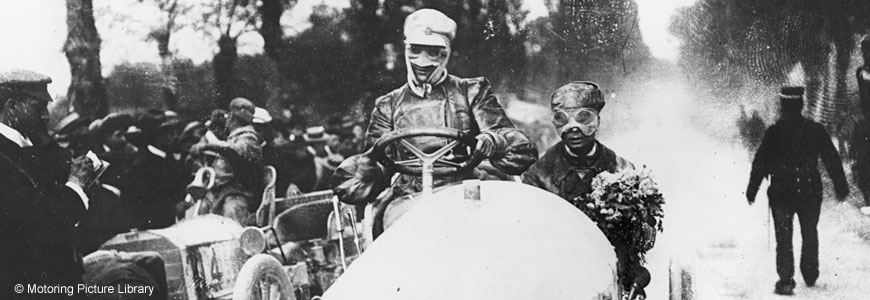
A flamboyant socialite who scorned convention, pioneering French celebrity Camille du Gast broke everyone’s expectations to become the first woman to race consistently at international level.
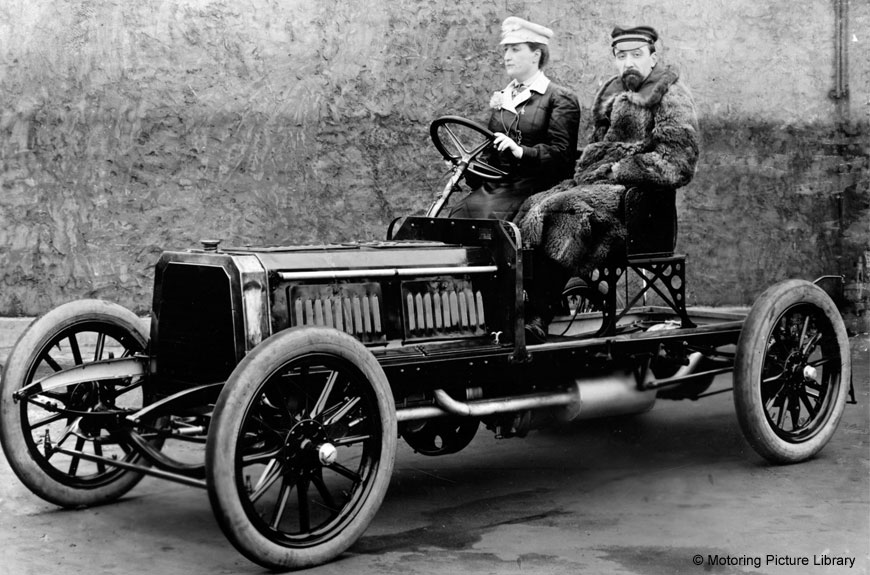
LIFE IS TOO BORING FOR WOMEN!
Born on the 30th May 1868 into a wealthy Parisian family and christened Marie Marthe Camille Desinge du Gast, Camille was undoubtedly a bit of a tomboy throughout her childhood years but as she flourished she was regarded as the most beautiful woman in Paris – green-eyed, fair haired with a shapely corseted figure, a wicked sense of humour and irresistible smile – what you might call ‘a winning combination!’ However, at an age when women were expected to behave in a certain manner, Camille did exactly what she wanted – utterly scornful of convention. In her words, ‘life was just too boring for women’ at the turn of the century!
Camille became an accomplished fencer, skier, rifle & pisol shot, horse trainer, concert pianist and singer, but it was as a balloonist that she first captured public interest, jumping out of a hot air balloon with a parachute from a height of 2,000 feet in 1895.
Camille shared her passion for hot air ballooning with her husband, Jules Crespin, whom she’d married in 1890. Crespin was manager and major shareholder of Dufayel, one of the largest department stores in Paris, so to avoid any suggestion that her exploits were undertaken to publicise the store, Camille always used her maiden name – this in fact was the case throughout her sporting life.
Sadly, Jules died young in 1896 leaving Camille a very wealthy widow with a young daughter. Camille, perhaps to help acclimatise with the loss of her husband after only six years of marriage, travelled extensively as well as taking up mountaineering and crossing Morocco on horseback, often travelling alone in potentially volatile situations. Fearless, Camille acquired a passion for motor racing – supposedly following an affair with Gordon Bennett who went on to describe her as the greatest sportswoman of all time.
LIES & SCANDAL
Depicted as an elegant woman with an imposing and nonchalant beauty, Camille’s wealth, magnetism, independence and gallantry were the talk of the town; her totally non prejudicial attitude inevitably attracting opposition, gossip and jealousy. She was both admired and detested in equal measure and was no stranger to scandal…
In 1885 the artist Henri Gervex painted La Femme au Masque (The Masked Model), a scandalous picture of a female model standing nude apart from a mask concealing her face. The true identity of the model was never publicly revealed; attracting a wealth of speculation and accusations. Camille was named (mistakenly) as the mystery woman and she became embroiled in three separate court cases, with the salacious and vivid details being reported worldwide. But it was not all doom and gloom for the indominatable Camille – many newspapers praised her for the way in which she had conducted herself throughout the trial and commending her for her numerous achievements and intellect.
PARIS TO BERLIN
Never one to be deterred, Camille set about entering the 1901 Paris to Berlin race in a 20hp Panhard from Paris to Lyon, along with Baroness Helene van Zuylen – wife of the President of the Automobile Club de France. They were the only two female entrants. Unfortunately the Baroness had to retire due to technical problems but Camille, despite starting last out of 122 entrants, finished 33rd overall in just over twenty-five hours. What came next would become memorable for different reasons…
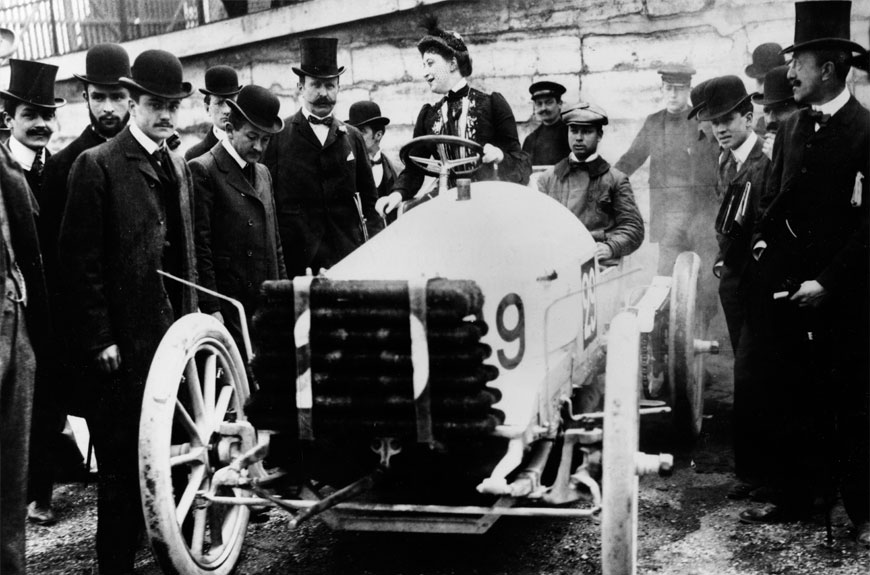
‘RACE TO DEATH’
In 1903, Camille was offered the chance to drive a 5.7 works 30hp De Dietrich in the Paris-Madrid race, an early motor racing experiment. Setting off in 29th place, all started well – how those gallant Frenchmen smiled and applauded her, raising their hats as the impressive sight of Camille, sitting bolt upright behind the wheel drove by! Incidentally, the seating position was due to the corsetry that was very much ‘a la mode’ – imagine, it would have been impossible to have a somewhat ‘relaxed air’ about you with all that strait-lacing and boning enveloping your upper body! Dorothy Levitt would certainly have approved as, whilst writing her book, The Woman and the Car which was published in 1909 she wrote disapprovingly about any woman who was seen ‘lolling behind the wheel!’
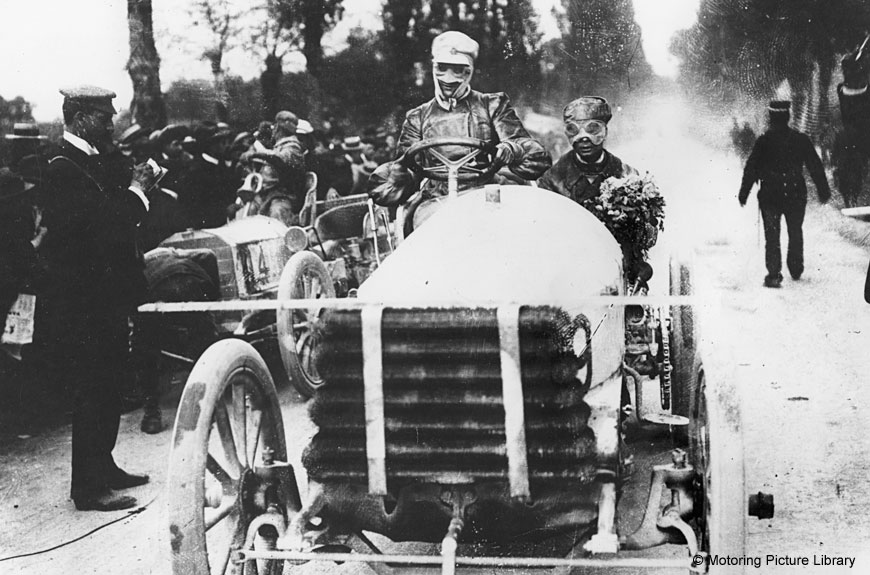
Gaining momentum in 8th place, that’s when it all went horribly wrong – Camille had to stop to administer first aid to a fellow De Dietrich driver, an Englishman named Phil Stead who had become trapped under his car when it rolled into a ditch. There is no doubt that Camille saved his life, but when she reached Bordeaux in 77th place, the number of accidents had risen sufficiently that the race was aborted.
BANNED FROM RACING
In 1904, despite the Benz factory team offering Camille a race seat for the Gordon Bennett Cup, the French Government decided to barr women from competing in motorsport. Their reasons being that women were guilty of causing too much excitability and were all too nervous anyway!
So what next? ‘What about boats?’ our heroine is thinking…! In France, motor boat racing was proving to be the new vogue sport and was growing at a speed rivalling that of motoring in the 1890s. Camille went on to compete in various events, including racing at Monaco – a four-day event exhibiting many different types of motor boats.
ATTEMPTED MURDER & A BROKEN SPIRIT
In 1910 Camille’s life almost ended in tragedy, due to her daughter, a jealous and mercenary individual who had been trying to get her thieving little hands on her mother’s money. Under cover of darkness a rather unsavoury band of her daughter’s friends pitched up at the house with ‘murder on their minds.’ Camille, showing her true colours and without any hesitation, confronted them – with them fleeing into the night. Having survived an assassination attempt and the trauma that followed, nothing could ever be the same again for Camille and she vowed there and then to devote the rest of her life to animal welfare. This included working at a Paris Refuge for stray and injured dogs, originally founded by Gordon Bennett in 1903. In 1927 Camille used her own money to modernise and enlarge an animal shelter at Gennevilliers.
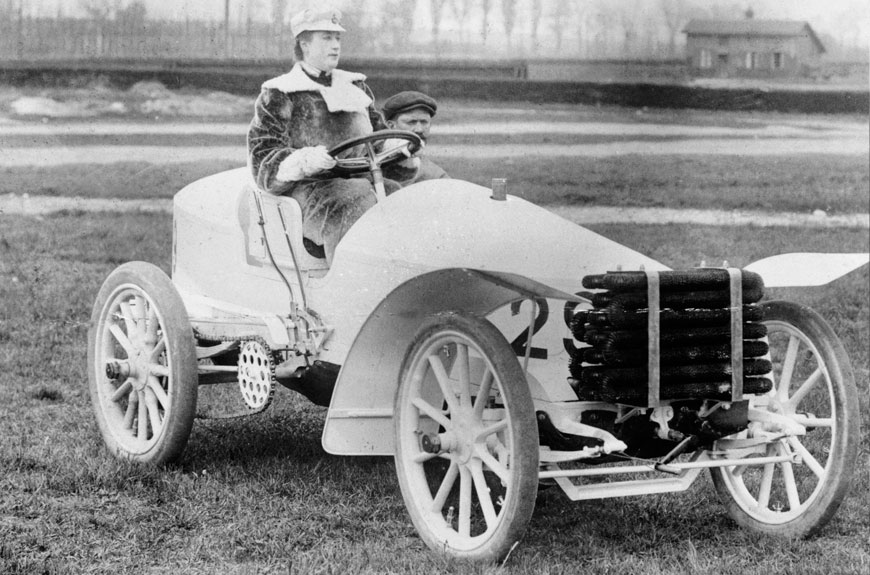
DEATH & COMMEMORATION
Camille is buried in the Crespin family tomb at the Pere Lachaise Cemetery in Paris. In 1929 she was honoured when the French Government named the rue Crespin du Gast in the Paris district of Menilmontant, a name that is still preserved today. She is also commemorated by the technical school, Lycee professional des metiers de l’automobile Camille du Gast at Chalon-sur-Saone.
Next time: discover the colourful life of Dorothy Levitt – a quintessential English Rose and record-breaking Edwardian Motoriste, who was also Selwyn Edge’s paramour…
Sarah Crofts has been sharing her passion for motorsport with Beaulieu’s visitors since she first joined as a volunteer in 2007. Now a Museum Attendant, she has grown to love her role more and more and can’t imagine doing anything else! Sarah’s popular Women in Motorsport tour is one of several daily tours on offer in the National Motor Museum.
